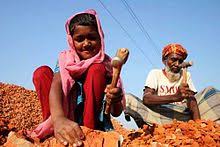Global Call Intensifies to End Child Labour as 2025 Goal Slips Out of Reach
The gathering laid bare the slow pace of progress, revealing that the world is unlikely to meet its 2025 target to eliminate child labour in all its forms—one of the central aims of the Sustainable Development Goals (SDGs), particularly SDG 8.7.

The international community is facing a critical juncture in the fight against child labour, with United Nations leaders and experts sounding a stark warning during the “Childhood with Dignity” dialogue held at UN Headquarters on Tuesday. The gathering laid bare the slow pace of progress, revealing that the world is unlikely to meet its 2025 target to eliminate child labour in all its forms—one of the central aims of the Sustainable Development Goals (SDGs), particularly SDG 8.7.
Despite notable achievements—86 million fewer children are in child labour today than in 2000—the momentum has waned. As of 2020, an estimated 160 million children, including 97 million boys and 63 million girls, were still working, with about 79 million subjected to hazardous conditions that endanger their health and moral development.
A Sobering Assessment of Progress
Opening the high-level dialogue, UN General Assembly President Philemon Yang underlined the urgency of renewed commitment:
“Sustainable Development Goal 8.7 calls for the eradication of child labour in all its forms by 2025. We must act with renewed urgency to ensure that all children are able to live the life of dignity and opportunity they deserve."
Yang emphasized the need to tackle systemic root causes—poverty, inequality, lack of education, and weak enforcement of child protection laws. He urged nations to strengthen legal frameworks, enhance the enforcement of fair wage and labour laws, and expand investment in vulnerable children, especially those in hard-to-reach and rural communities.
Rights at Work: A Universal Obligation
ILO Director-General Gilbert F. Houngbo reminded participants that abolishing child labour is not merely a development goal, but a globally recognized principle:
“The effective abolition of child labour is a fundamental principle and right at work. These principles are more essential than ever in today’s shifting world order, where inequality, conflict, and uncertainty threaten the foundations of decent work.”
The dialogue shone a spotlight on two pivotal International Labour Organization (ILO) instruments:
-
The Minimum Age Convention, 1973 (No. 138)
-
The Worst Forms of Child Labour Convention, 1999 (No. 182)
While the latter has achieved universal ratification—a rare feat in international law—many countries continue to struggle with enforcing the commitments enshrined in these agreements. Implementation gaps remain, particularly in fragile and conflict-affected regions.
Conflict, Trafficking, and Supply Chains Under Scrutiny
One of the grimmest topics raised was the recruitment of children into armed conflict—deemed one of the worst forms of child labour. Participants called for urgent protective measures in war-torn regions where children are exploited as soldiers, porters, or sex slaves.
Global supply chains were also scrutinized. As consumers and corporations become more socially conscious, calls grew louder for governments and companies to ensure that their goods are not produced with child labour. This includes better monitoring, transparency, and accountability in sourcing and manufacturing practices.
Education and Social Protection: Pillars of Prevention
A key outcome of the dialogue was the consensus on universal access to free, quality basic education and early childhood development programs. Education is recognized as both a protective measure and a sustainable pathway out of child labour.
There were also renewed calls for stronger integration of child labour concerns into broader national policies on:
-
Social protection
-
Decent work for parents
-
Inclusive economic growth
Participants stressed that decent employment opportunities for adults can reduce a family's reliance on child income and help break the cycle of intergenerational poverty.
The Role of Data, Policy, and Partnerships
Stakeholders highlighted the need for robust data and policy-relevant research to effectively monitor trends, measure policy impacts, and design targeted interventions. Enhancing national capacities in data collection and statistics is seen as foundational to accelerating progress.
Multilateral collaboration emerged as another pillar of success. Governments, NGOs, international organizations, and the private sector were all encouraged to participate in collective action—sharing best practices, coordinating initiatives, and mobilizing financial and technical resources.
Looking Ahead: The 2025 Global Estimates
The ILO and UNICEF are preparing to release the 2025 Global Estimates of Child Labour on 11 June. This report is expected to provide a definitive update on the state of child labour worldwide and may guide the next phase of global policy interventions.
While the 2025 goal to eradicate child labour appears out of reach, the UN's dialogue signals that momentum is not lost. The path forward demands intensified commitment, better enforcement, smarter policies, and—above all—a shared moral resolve to protect the world’s most vulnerable.
ALSO READ
GS1 General Assembly 2025: Shaping the Future of Global Supply Chains in Mumbai
Revamping Defense Supply Chains: NITI Aayog's Call for Legal Overhaul
LRQA Reinforces Commitment to Sustainable Supply Chains at Cascale Forum 2025
Why Food Grows But Doesn’t Reach: Transport and Trade Challenges in African Supply Chains
Strategic Diversification: How Supply Chains Can Withstand Global Trade Shocks










